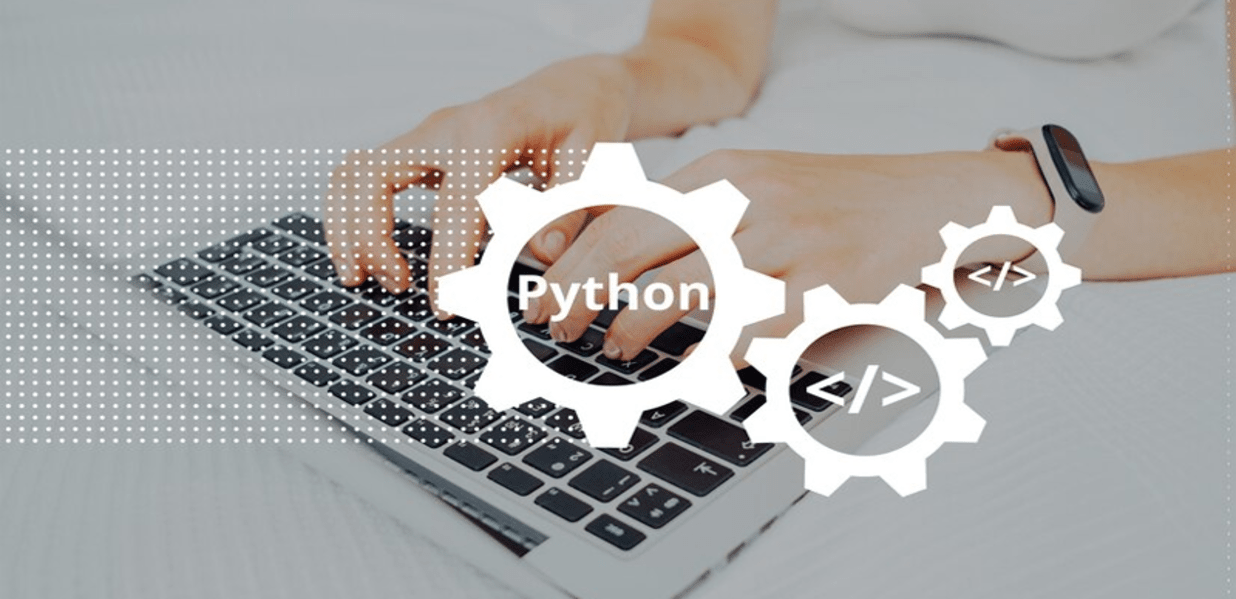From Big Data to Machine Learning: Discovering the Python Use Cases
Hello Readers!
Have you ever wondered how the data you generate daily is used to make decisions? How have big data and machine learning taken on a larger role than ever before, ranging from shopping to doctor diagnoses? And at last, what does this have to do with Python?
Overall, whether you're seeking data-driven insights or advanced automation, Python is the ultimate tool for success. Our Python services providing company is dedicated to harnessing the full potential of this remarkable language to fuel your business growth.
From processing vast datasets to developing sophisticated machine learning algorithms, Python has solutions to suit your unique needs. They are now supporting us with Python's ease of use, extensive libraries, and widespread community support.
And to get answers to the above questions, read the blog and see, how leveraging Python, you make informed decisions, streamline processes, and gain a competitive edge in your industry. You may be compelled to embrace Python's uniqueness and transform your vision into reality, achieving unparalleled success in the data-driven world.
Are you ready to read the use cases of Python and how it can empower your business to its full potential? Let’s delve into the world of possibilities as we uncover how Python can revolutionize your operations, from handling massive Big Data to driving cutting-edge Machine Learning solutions.

Explore Python’s Role in Big Data and Machine Learning Today!
Using Python for Big Data
Over time, Python has grown in popularity. It is particularly appealing because of its simplicity of use and adaptability while working with big datasets or complicated algorithms. It enables companies to quickly prototype ideas without requiring them to have a solid understanding of computer science. It is not necessary to know coding languages like C++ or Java.
Additionally, there are a ton of libraries that support machine learning activities like categorization or regression analysis. It makes it much simpler for those who are just starting out with Python ML development!
The interactive nature of iShell is a key benefit of Python. It has a distinct edge over R and SAS in that regard. Errors are immediately visible when they occur, which facilitates quick debugging. No need to wait until the end of the compilation to learn who they are!
Additionally, iShell offers direct access to memory locations used during execution. This means that any modifications made here will take immediate effect on the program that is currently running. There is no need for additional processes, such as generating source code.

Unlock Python’s Potential in Data Science and AI!
Python Libraries for Big Data
Large datasets may be explored, analyzed, and visualized with ease in Python thanks to its rich library environment. Python has something for everyone in this subject, from straightforward statistical analysis to intricate predictive modeling methods. The majority of Python programmers use the core libraries NumPy, Pandas, SciPy, matplotlib, and scikit-learn.
These libraries are used, in turn, for machine learning, scientific computing, data manipulation, visualization, and numerical processing. These easily offer powerful capabilities, such as classification models or linear algebraic computations. There are numerous more useful modules as well, such as the NLTK Natural Language Processing Toolkit. You can incorporate it into your projects as well!
Memory utilization must be carefully considered when using these libraries to work with big data sets. Today, picking a framework or toolchain arrangement based on Apache Spark, TensorFlow, PyTorch, etc., is fortunately very flexible.
It all relies on the type of application that needs to be developed initially, whether it's single-user interactive dashboards powered only by web browsers or real-time streaming analytics systems running at scale across numerous servers.
You may get commercial solutions designed especially for their portfolio of goods and services. For instance, without the requirement for coding expertise, Amazon ML Services delivers prebuilt AI models that are immediately usable.
Even IBM Watson Studio provides visual drag & drop interfaces allowing nonprogrammers access control over intelligent systems quickly & easily. They can do it within minutes instead of investing days/weeks to manually craft a custom codebase from scratch.

From Big Data to ML: See Python in Action!
Data mining can be done using Python, a strong programming language. Its versatility and ease of usage have helped it gain popularity over the past few years.
Data mining is the process of using a variety of algorithms and approaches to extract meaningful information from massive datasets. To find patterns within data sets, these techniques include statistical analysis, predictive modeling, clustering analysis, etc.
Anyone with rudimentary programming skills can start examining their own datasets thanks to Python's wide library support for these tasks. It's not required to have prior knowledge of data mining or machine learning algorithms!
It provides several libraries, including TensorFlow (for deep learning), Pandas (for organizing tabular/columnar-formatted data), Scikit-Learn (for machine learning), and NumPy (for numerical calculation).
Machine Learning with Python
The field of Python-based machine learning has recently gained popularity. It enables programmers to build robust models and algorithms that can draw reliable conclusions from large data sets. It's understandable why so many businesses use Python for their machine learning needs given its usability and flexibility.
Python has a large selection of libraries that make it simple for newcomers to start working on projects right away. They do not require much prior understanding of the ML techniques or algorithms employed in these applications.
It is therefore perfect for business executives who need results quickly but lack considerable programming background. Additionally, there are a ton of online tutorials that describe how each library operates. Examples demonstrating its usage also help leaders understand concepts better before coding themselves!
Scalability is another benefit of utilizing Python-based ML systems. Due to their parallel processing capability, they can handle massive datasets more effectively than other languages like Java or C++ (which could need more resources).
Additionally, the majority of open source tools in use today largely rely on NumPy/SciPy stack components that are developed on top of the CPython interpreter engine, giving programmers access even farther down the stack level if they so want during the development stages!
Finally, but equally crucially, when it comes to performance measures, running times typically tend to be kept low even when dealing with enormous amounts of data, partly because an effective memory management system has been incorporated into the frame structure as a whole.
Also Read: Do You Know These Important Aspects of Machine Learning Development Process
Exploring Natural Language Processing Features of Python
A variety of applications can be created using the robust and adaptable programming language Python. Python has emerged as one of the most widely used languages in use today, covering everything from big data to machine intelligence. It excels in several areas, including Natural Language Processing (NLP). Python makes it simple to investigate NLP capabilities because of its broad library features.
The term "natural language processing" (NLP) refers to methods that computers or other technologies employ to comprehend content in human languages, such as text or speech. Computers can quickly and reliably process a lot of information using NLP algorithms without any manual assistance from users or programmers!
Python offers several libraries designed specifically for exploring different aspects related to natural language processing:
NLTK - The Natural Language Toolkit
- spaCy - Open Source Lexical Analysis Library
- Stanford CoreNLP – Machine Learning-Based Parser/Annotator Framework
- Gensim – Scalable Multilingual Semantic Topic Modeling Toolkit…etc
The strength of these tools rests not only in their capability but also in the fact that they offer an intuitive user interface, making it easier than ever for developers to deal with NLP jobs and access this field!
Additionally, there are a lot of different third-party packages available, so if a particular feature needs to be implemented, chances are good that someone else has already done the grunt work, meaning integration should require little overall effort.

Revolutionize Your Projects with Python’s Big Data and ML Power!
Deep Learning using TensorFlow in Python
Machine learning's deep learning subfield has completely changed how we communicate with machines. It enables robots to make judgments based on data rather than being explicitly programmed. One such instance uses Python's TensorFlow library for deep learning. With the help of this robust tool, programmers may produce sophisticated applications for speech recognition, natural language processing, image recognition, and other tasks.
Python's user-friendly characteristics, including its built-in libraries like TensorFlow or Keras and high-level data structures, make it the perfect platform for developing deep neural networks.
Let's first clarify what is meant by "Deep Learning" in its precise sense. Its fundamental process entails supplying a computing device called a Neural Network (NN) with a huge amount of data.
An NN is made up of several layers, each of which processes data from the layers below it until the final layer (or levels) generates output values. These outputs could be weights assigned to neurons in various layers or activation levels computed as a result of them.
Depending on the algorithm type utilized during the training phase, such as Adam or backpropagation, etc. Once successfully trained, these algorithms can be employed on new sets of attributes that are unrelated to the training set but are sufficiently close to it to produce accurate results.
Conclusion
From the era of big data to the use of Python and machine learning today, we have come a long way. We've seen how this potent language can be used to develop potent models and algorithms that can help us make better decisions and solve challenging problems, starting with understanding the fundamentals of Python and moving on to examining its use cases in the field of machine learning.
Python has also proven to be capable of analyzing huge datasets and creating predictive models. The journey has been worthwhile, and Python is undoubtedly here to stay. As technology advances, so will the use cases for Python, and we as a Python services provider are dedicated to being on the front edge of these developments.
We are equipped to handle new difficulties and possibilities thanks to our team of skilled data scientists and machine learning specialists. We do this by utilizing Python's versatility to create cutting-edge solutions for your company.
Trust us to continuously adapt and develop our solutions as the data landscape changes so that you always have access to the most up-to-date tools and methods, making Python an ever-reliable companion on your data-driven journey.
So, if intrigued by the use cases of Python and want to incorporate it into your data-driven business, get in touch with us right away. We have experts and trained individuals on staff who are proficient in utilizing Python's features to meet your particular objectives to perform this assignment flawlessly.
Our devoted team of Python experts will collaborate directly with you to ensure seamless integration and custom solutions that support your company's goals. With the help of our first-rate services, you can experience Python's transformative power and lead your company to unmatched success. Reach out to us right now to know how we work and to start your Python-based data-driven projects on a path to innovation and growth.
 June 13, 2025
June 13, 2025
 Balbir Kumar Singh
Balbir Kumar Singh
 0
0
 May 30, 2025
May 30, 2025
 Balbir Kumar Singh
Balbir Kumar Singh
 0
0
 June 27, 2025
June 27, 2025
 Balbir Kumar Singh
Balbir Kumar Singh
 0
0
 June 13, 2025
June 13, 2025
 Balbir Kumar Singh
Balbir Kumar Singh
 0
0
 May 30, 2025
May 30, 2025
 Balbir Kumar Singh
Balbir Kumar Singh
 0
0
 June 27, 2025
June 27, 2025
 Balbir Kumar Singh
Balbir Kumar Singh
 0
0
 June 13, 2025
June 13, 2025
 Balbir Kumar Singh
Balbir Kumar Singh
 0
0
 May 30, 2025
May 30, 2025
 Balbir Kumar Singh
Balbir Kumar Singh
 0
0













Leave a Reply